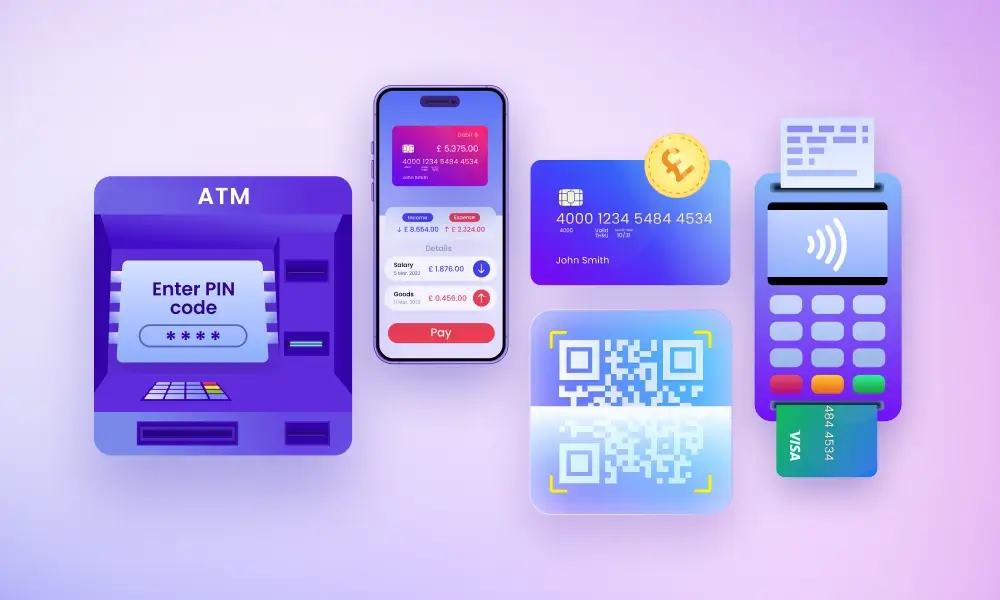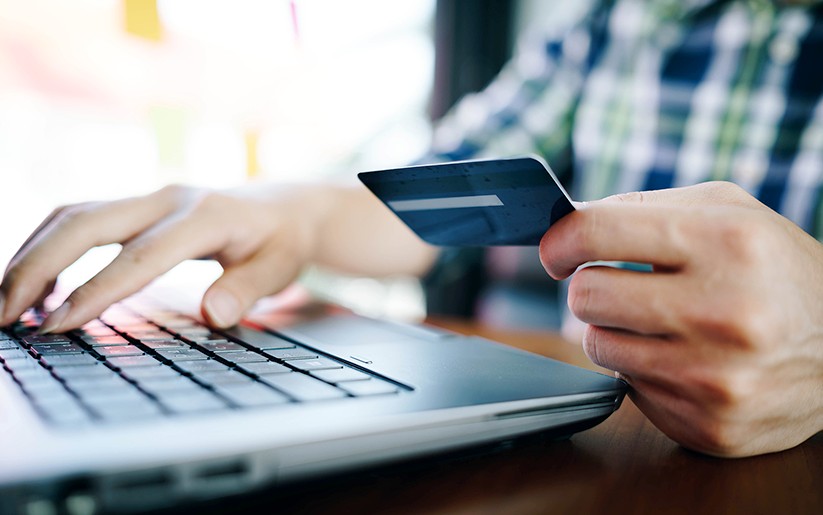When setting up shop online, how to choose an e-commerce payment platform can make or break your success. This ultimate guide offers must-know tips for picking a winner. Will it be user-friendly enough for your buyers? Secure enough to shield their data? Or flexible enough to grow with your business? These answers matter. I’ll help you sift through the types, weigh up costs, and ensure top-notch security and PCI compliance. Plus, I’ll guide you through boosting the checkout process and scaling up when your sales soar. Let this be your roadmap to a payment platform that pays off.
Understanding E-commerce Payment Platform Basics
Evaluating Different Types of Payment Gateways
When picking an online payment gateway, think about your shop’s needs. Ask yourself, do you want a gateway that’s easy to set up and use? Or do you need one with many features, like fraud prevention or different payment options? Some gateways are easy to add to your site. Others come with extra security measures. Remember, the best ones make buying easy and keep customer’s data safe.
Payment gateways come in three types:
- Hosted Payment Gateways: These take your customer to another site to pay. They work well if you don’t want to handle customer payment info directly.
- Integrated Payment Gateways: These let customers pay without leaving your website. They give a smooth checkout experience. But you’ll need to keep their info safe.
- Direct Post Gateways: This type sends the payment data straight from the customer to the gateway. They can be very secure.
Choose based on what you need most, like speed, safety, or cost.
The Importance of PCI Compliance and Security Features
Keeping payment info safe is key. If you’re taking credit card payments, you must follow PCI rules. “PCI Compliance” means meeting certain standards that protect card info. It’s not just a good practice; it’s a must to avoid trouble.
Security features should also be top of mind. Think about encryption to protect data. Include a secure sockets layer (SSL) for your site. This is needed for safe online sales. Also, look for tools that help fight fraud. This can save you money and keep your customers happy.
A secure platform can help you sleep better at night, knowing your customer’s info and your business are safe.
Make sure to check for:
- SSL certificates: These encrypt data that goes between the customer and your site.
- Fraud detection tools: These look for signs of fake orders to stop scammers.
- Encryption methods: These scramble data so if it’s stolen, it’s much harder to use.
Being PCI compliant and having strong security is not just being careful, it’s being smart.
Choosing an e-commerce payment platform is a big move. You want one that’s secure, fits your budget, and makes shopping easy for your customers. Look at different gateways and see how they stack up. Check if they’re safe and PCI compliant. And think about the checkout experience they offer. Taking these steps can lead to more sales and fewer problems. Trust me, the effort you put in now will be worth it in the long run!
Assessing Costs and Compatibility for Your Online Store
Comparing Payment Gateway Fees and Transaction Rates
When you’re starting an online shop, one key move is picking the right way to get paid. You want a payment gateway that’s easy on your wallet and works well for what you sell. Think of it as the digital cashier for your store—it needs to be reliable and cost-effective.
What’s the deal with payment gateway fees and transaction rates? They’re the amounts you fork over each time a customer buys from your shop. Each gateway has its own fees. Some ask for a cut of each sale, others have a flat fee every month, or it could be a mix of both. The trick is balancing what you can afford with what you really need.
A good start is to look at the fees. A lower fee might seem great, but watch out! It might mean less support if things go wrong. Now the transaction rate often tags along with the fees. This is what you pay for each sale. Remember, lower isn’t always better. Think about what you get for what you pay. After all, saving a penny now could cost a dollar later if the service isn’t up to snuff.
To nail down what suits you best, compare gateways. There are tools on the web that lay out the details of what each one offers. And don’t forget, as your store grows, so will your needs. You’ll want a gateway that’s going to grow with you—in the right direction.
Ensuring Digital Wallet and Credit Card Processing Compatibility
Customers love options. We all do. When they hit checkout, they should find the way they like to pay. Credit cards are huge, of course, but digital wallets are getting big, too. You know, like Apple Pay or Google Wallet.
So, what’s this mean for you and your shop? To keep sales smooth, your payment gateway needs to get along with credit cards and digital wallets. If it doesn’t, customers might just skip your store and hop to another. And we don’t want that.
Getting this right often means looking for signs like “PCI compliant,” which means the gateway’s security is top-notch. This keeps cards safe, which makes everyone sleep better at night. You should also check if the gateway can deal with different currencies if you plan on selling abroad.
Here’s another thing: mobile payments. Lots of shoppers use their phones to buy stuff. If your shop is ready for this, you’ll be friends with the on-the-go crowd.
Weaving in support for stuff like recurring billing is another big plus. This is for when you’ve got a service or a product that people pay for over and over—like a subscription box.
The bottom line? Choose a payment gateway that fits your budget and plays well with credit cards and digital wallets. Look for flexibility and a clean, simple flow at the checkout. This keeps customers happy and coming back.
This setup isn’t just about today. It’s also about where you’re going. Pick the right payment gateway and you’re setting up your shop for success down the road. It might take some homework, but it’s worth every minute. Your customers—and your bank account—will thank you!
Enhancing Customer Checkout Experience
Opting for User-Friendly Payment Interfaces and Mobile Solutions
When you run an online store, your checkout is key. You want it smooth and easy. Think about what you like when you shop. You want few steps and quick loading pages. This is where user-friendly payment interfaces shine. You must select an online payment gateway that people find simple to use. This means big buttons and clear text that guide through each step. Payment gateway comparison is a must. You look for one that won’t confuse your buyers.
Mobile shopping grows fast. More folks buy stuff using phones today. You need mobile payment solutions for e-commerce. This makes buying on-the-go easy. Your store must work well on small screens. Make sure typing info in is not hard. Buttons must be big enough for thumbs!
Offering Multiplicity: Multi-Currency and Recurring Billing Support
Now, let’s talk choice and freedom. Your store can sell across the globe. That means you need multi-currency support. It lets customers pay in their own money. This helps them trust and understand prices better. It feels local, even if it’s not. Payment solution customer support is key, too. They can help your shoppers with any money questions.
Do you sell stuff folks might buy more than once? Think about recurring billing support. This makes life easy for those who buy from you often. They can set up their payment once and forget it. Next time, it’s all automated. Also, this can keep them coming back. Selling a service or subscriptions? This is a must.
Think of payment processing speed too. No one likes to wait. You click, you pay, done. Fast processing keeps customers happy.
You should look for two main pieces: PCI compliance online payments and digital wallet compatibility. This keeps customers’ card details safe and lets them pay how they like. It’s about trust and choice. Payment interfaces that offer both are ahead of the game.
What about safety? Security features payment processing can’t be overlooked. You need to guard against fraud. Fraud prevention for e-commerce might sound tough, but it’s vital. This can be a big worry for small businesses. Finding payment gateways for small business that protect against unauthorized charges is critical. Your gateway should help stop fraud before it happens.
Finally, let’s not forget about those recurring fees. Check on the credit card processing fees and transaction rates for e-commerce. When you know these costs, you can keep prices fair for your customers. It all adds up. Low fees mean you can pass on savings to your buyers.
In sum, think about your buyers at every step when you’re choosing a payment platform. It makes a world of difference. If you make paying easy and safe, they’re more likely to return. And that’s good for business. Keep your checkout smooth and options open. Then watch your store grow.
Scaling Your Payment Solutions for Business Growth
Implementing Fraud Prevention and Chargeback Management
When picking an online payment gateway, think about fraud. You must find ways to know and stop bad transactions. A good platform will check for strange activity and protect your store. Tools that spot fraud can save you a lot of trouble. They spot things that don’t look right and alert you.
Chargebacks are when customers say they didn’t buy something. They can hurt your business. A strong chargeback plan will protect you. Your platform should be able to show proof, like customer signatures. This helps in stopping false claims and keeping your money safe.
Fraud prevention should be invisible. Customers shouldn’t find it hard to buy stuff. It should happen in the background and not bother the person buying. Let’s not forget, happy customers mean more sales.
Now, let’s talk about how well the platform can grow with your business. Can it handle more sales as your store gets bigger? Ask, “Can the payment gateway keep up with my growing business?”
Securing Payment Platform Scalability and Third-Party Integrations
As your store grows, your payment needs will change. Make sure your platform can handle more work. It should also work well with other business tools. This means it can link to your shopping cart, accounting, and stock. All the parts should talk to each other without problems.
Think about what you’ll need down the road. You might need tools for other countries or to track how sales are doing. Your payment platform should not be a roadblock. Look for APIs that let your different systems work as one. A good API makes it easy to add new features.
Third parties are also important. They can add new ways to pay and help you sell more. Be sure the gateway you choose plays nice with others. It shouldn’t stop you from using tools that can help you sell more.
Having a payment platform that can grow with you is key to keeping things running smooth. You’ll want a system that’s easy to use and quick. Slow payment systems can lead to lost sales. Make sure it’s not only for now, but also for what’s next.
Do not forget about providing top-notch customer support. Imagine needing help and no one is there to answer. Always ask what kind of help they offer. Do they answer fast and are they helpful? This is crucial, especially when handling money.
Lastly, we know looking at all these things can be a lot. But taking the right steps now can pay off big time later. A great payment solution is a friend to your business. It helps you sell without worries and keeps your customers happy. Make sure it’s secure, friendly, and able to grow with you. Then, you can focus on what you do best – running your business.
So, we dug deep into the world of e-commerce payments. We looked at the key parts of payment gateways and why safety rules like PCI matter a lot. Then, we talked about money stuff—how fees and rates can affect your shop and making sure your store can handle different ways people want to pay.
For your shoppers, we shared how to make paying easy and quick, no matter if they’re on a phone or using different currencies. Finally, for your store’s future, we talked about stopping fraud, handling refunds, and keeping your payment tools ready to grow with your business.
I think getting your payment process right is huge for your store. It makes things better for you and your customers. If you nail that, your online shop is set to do great. Keep these tips in mind, and here’s to your success!
Q&A :
What features should I consider when choosing an e-commerce payment platform?
When selecting an e-commerce payment platform, key features to consider include payment options offered (credit cards, PayPal, Apple Pay, etc.), security measures for transaction protection, platform fees, ease of integration with your current e-commerce system, mobile-friendliness, and the level of customer support provided. Additionally, evaluate the user experience, including checkout process efficiency, as this can influence cart abandonment rates.
How important is security in an e-commerce payment platform?
Security is paramount in an e-commerce payment platform. Look for platforms that comply with the Payment Card Industry Data Security Standard (PCI DSS) and employ SSL encryption to protect sensitive data. Features like fraud detection tools and tokenization can also provide extra layers of security. Not only does this protect your business and customers, but it also builds trust, which is crucial for online transactions.
Can payment processing speed impact e-commerce sales?
Yes, payment processing speed can significantly impact e-commerce sales. A seamless and swift payment process can improve customer experience, reduce cart abandonment, and increase the likelihood of repeat purchases. Slow processing might frustrate customers and lead them to seek alternatives with faster checkouts.
What are the costs associated with e-commerce payment platforms?
Costs associated with e-commerce payment platforms typically include transaction fees, which can be a percentage of the sale plus a fixed fee, monthly or annual subscription fees, and sometimes additional fees for chargebacks or international payments. It’s crucial to compare these costs across different platforms to find a cost-effective solution for your business size and sales volume.
How does the choice of an e-commerce payment platform affect international sales?
Choosing an e-commerce payment platform that supports multiple currencies and international payment methods can significantly affect your ability to capture and grow your international customer base. It should also handle country-specific regulations and tax calculations. Platforms with global capabilities can help localise the shopping experience for international customers, which can lead to increased sales.






